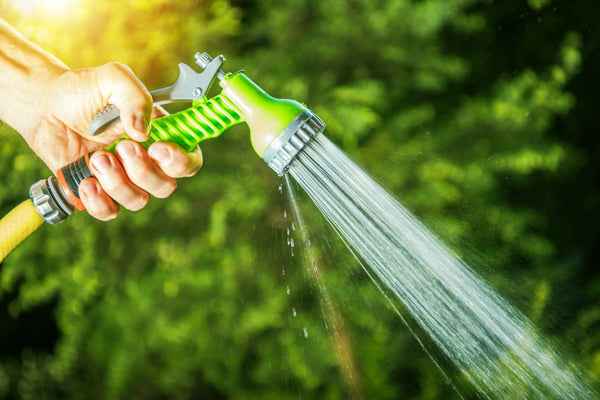Caring for your Canvas Bell Tent
Apr 27, 2020
Whether you are looking to invest in a canvas bell tent or you have already taken the plunge, this guide will take you through the steps of caring for your gear. A simple care regimen will see your tent last through many adventures.
Not sure what exactly makes a canvas bell tent special? Check out What is a Canvas Bell Tent? for more info.

Get your tent ready for adventure with our easy care regimen
Erecting your canvas bell tent
Your care and maintenance regimen starts when setting up your bell tent. Our biggest tip is to follow the included pitching directions carefully. Even if you have set up tents before it is worth reviewing these instructions to ensure the longevity of your investment. After you have set your tent up a few times, you will see how simple the process is, and you will be a pro in no time.
For detailed instructions on setting up your canvas bell tent, please download our Bell Tent Care & Instruction Manual.

Be sure to erect your tent with the zips closed
Be sure to erect your tent with the zips closed. If you leave the zips open while pitching, you may pitch your tent too tightly. Then, when you go to close your entrances or windows, there will be too much pressure on the zips, causing them to break. Simply checking the zippers at the start of the process is a quick and easy step that can avoid frustration down the road.
Once you have erected your tent with the zips closed, make sure that the tension is evenly distributed across the canvas. If your tent has not been set up evenly, the canvas may become damaged or unevenly worn over time.

Pitch your tent evenly to avoid unnecessary wear and tear
We recommend a quick, daily check on your guy ropes, particularly after heavy wind or rain, to ensure that the tent is evenly taut the whole way round. If there are any overly tight spots, let out the guy ropes until you achieve the desired tension.
First use and beyond - what to expect
Cotton can, when new, let some air through and leak around the seams. After the canvas has been wet once this will no longer happen because of the cotton expanding. You don’t have to wait until you’re camping in a downpour to seal these leaks! You can achieve this through a process called seasoning.
Seasoning involves thoroughly soaking the tent to allow the thread to expand and seal
Seasoning involves thoroughly soaking the tent to allow the thread to expand and seal any small holes created when all the components of your tent were sewn together. When seasoning your tent, it is essential to pitch on a level surface, using ALL the included guy ropes and pegs. During seasoning, your tent will expand and contract; you want to make sure that these processes are happening evenly to avoid any sagging or pulling in the canvas.
Once you have pitched your tent, go inside and spray the seams thoroughly with water using a spray bottle, ensuring they are fully soaked through. Then, using a hose or sprinkler soak the exterior of your tent, paying particular attention again to the seams. Do not use a pressure hose or jet spray as this can damage the waterproofing treatment on the canvas. The idea here is to simulate rain falling on the tent.

Simulate rainfall when seasoning your tent by using a low-pressure hose
Finally, leave your tent pitched and allow it to dry fully. Repeat this soaking and drying process at least one more time to ensure the tent is well seasoned, twice more is ideal. Allow your tent to dry out fully before packing away. Your tent is now ready to keep you cosy and dry, whatever Mother Nature throws at you!
Cleaning your canvas bell tent
One of the many benefits of a canvas bell tent is how beautifully you can style them to create a home away from home. While the aesthetic perks of this are clear, soft furnishings can also add a layer of protection to the tent itself. Rugs, beds and cushions that you can remove and machine wash are a great way to keep the tent itself clean.

Use soft furnishings to protect your groundsheet from spills
You can also add an extra layer of protection to the base of your tent by pitching it on a tarp or, if pitching for a long period of time, on a wooden deck. This creates a barrier between any ground moisture and the canvas groundsheet of your tent, keeping it dry so you can store it quickly once your camping trip comes to an end.

Create a barrier between your tent and any ground moisture by pitching on a tarp or wooden deck
Try as we might, accidents and spills are just a fact of life. Nature can also provide a fair share of marks and stains. So what do you do if your canvas does get a little dirty? Here are our cleaning tips:
- Remove stains when they are created where possible. Look out for both natural dirt (bird droppings, sand, saltwater etc.) and domestic dirt (cooking stains, soda, wine, sun cream etc.)
- Remove light stains with a soft bristle brush or sponge and freshwater. Chemical products not designed for natural canvas may impact the waterproofing treatment on your tent
- Use only specialised tent canvas cleaning products to remove tough stains
- Dust and dirt are best removed once the canvas is dry. Brush down the canvas with a firm bristled floor brush or similar
Storing your canvas bell tent
When the time comes to pack up your tent ready for your next adventure, be sure to do so once it is 100% dry. If you are forced to pack your tent away when it is damp or wet, then it must be set up again within 48 hours and allowed to dry thoroughly before returning to longer-term storage.
Store your tent in a cool, dry area, off the ground and out of direct sunlight
Store your tent in a cool, dry area, off the ground and out of direct sunlight. Take care not to store anything on top of the tent as this can distort the canvas or damage the components. Keep the storage area clean and well maintained as pesky rodents and insects can cause damage to stored tents.
Life may get in the way sometimes, but do your best to take your tent out or storage at least once every 12 months to allow it to recover from its compacted and stored state. Even if you can’t get away with your tent, a little spot of backyard camping can be a magical experience for the family.

Embrace backyard camping to check in on your tent every once in a while
So there you have it! Our ultimate guide for caring for your Canvas Bell Tent. If you snap any photos of your camping adventures, we would love to see them! You can email them through to hello@baysports.com.au or tag us on Instagram (@Baysports_Co) or Facebook.
Find out more:
- Check out our other Camping Lifestyle Blogs
- Grab a Canvas Bell Tent of your very own here
- Read What is a Canvas Bell Tent?
- L

